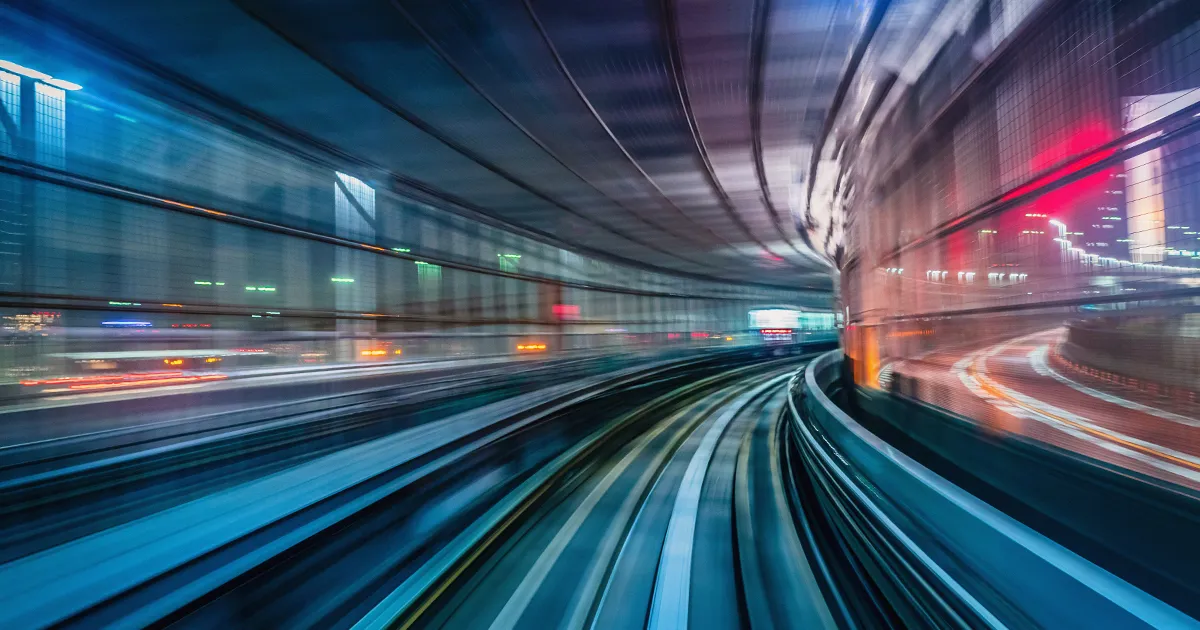California’s High-Speed Rail Network Will Run on Solar Power Generated by a $200M State-Owned System

California’s high-speed train project has been surrounded by controversy and setbacks since its inception in 2008. But the beleaguered California High-Speed Rail Authority initiative just received a promising update.
According to the agency behind its development, the rail network will be powered by solar energy. The ambitious goal would make the high-speed system the first of its kind.
However, sourcing enough solar electricity to power a small town (and developing the infrastructure to support it) will be no small undertaking. The rail network, already a decade and billions of dollars behind schedule, remains incredibly far from reality. Adding solar promises to the mix won’t speed up its development, but it could serve as a roadmap for the future of sustainable travel.
Promising Location
California is an excellent location for solar energy projects. That’s fortunate since the high-speed rail system beginning to snake across 171 miles of Central Valley will demand some 44 megawatts of electricity. For perspective, that amount of power could sustain a city of 33,000 people.
But the electricity generated by a proposed 552 acres of solar panels will be spent in massive bursts to propel the high-speed train as fast as 220 miles per hour. Notably, the land necessary to house the solar panels has already been secured, hopefully paving the way for smooth installation in the coming years.
The solar-powered system will also help regulate the train’s temperature in California’s brutal summer heat and keep the system running in the event of power outages. Batteries on board each train will help regulate the system by storing 62 megawatts of power that can help replenish the local energy grid.
Margaret Cederoth, director of planning and sustainability for the California High-Speed Rail Authority, told Forbes, “At times of peak grid stress, we’ll be able to use some of the electricity from the batteries to feed back to the grid—kind of serving like a power plant in a way.”
The agency will own and operate the solar energy system supplying power to its high-speed trains.
Creating the $200 million utility-scale system is an attractive prospect for many firms. Given the scope of the undertaking, large, established companies like Siemens or Alstom have an advantage. For now, the eventual supplier of the system remains unknown.
Despite the massive cost, creating a renewable power system promises to save money in the long run. The agency estimates savings of roughly $14 million per year.
Generating More Complaints?
The high-speed rail project is intended to connect residents from Sacramento down to San Diego with stops in Los Angeles, Central Valley, Fresno, San Francisco, and San Jose. The agency plans to implement its network of connections over a series of 10 phases—of which zero are complete. Currently, just 120 miles of the 520-mile proposed track are under construction. The rest, like the solar grid that will power the trains riding them, are still being developed.
Even so, officials involved with the project claim that investing in the project now will keep costs lower than doing so in the future. Whether or not that prediction comes true, especially as solar technology gets cheaper and more efficient each year, remains to be seen.
Notably, the project’s ever-moving deadline and soaring budget have kept critics busy over its 15-year lifespan. Originally planned to open in 2020 for $33 billion, the earliest estimate now has the high-speed system’s first segment kicking off its operations in 2030 for a total cost of $128 billion.
Model for the Future
Despite this project’s historic shortcomings, it could still be a beacon of hope for the future of green transportation. And it isn’t alone.
Billionaire-funded Brightline West aims to connect L.A. to Las Vegas with a similarly solar-powered high-speed rail system. However, it plans to do so by purchasing solar energy from existing operators of massive desert solar fields rather than building its own. The Brightline West project also has a much smaller price tag at $12 billion and is scheduled to open in 2028.
Overseas, Germany and England have started experimenting with their own solar-powered rail systems. However, those projects are limited given the less favorable environment for solar energy generation.
Nonetheless, as the world searches for ways to decrease the transportation industry’s emissions, California’s ambitious project could be a roadmap for future systems. Only time will tell if its latest solar plan will be successful. But for now, it is a promising look at what could be the future of green high-speed rail transportation in America.





